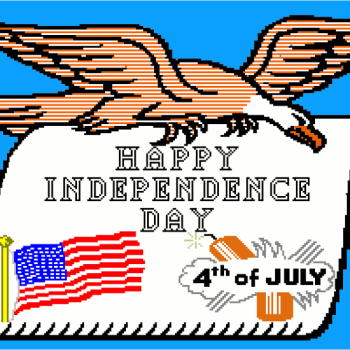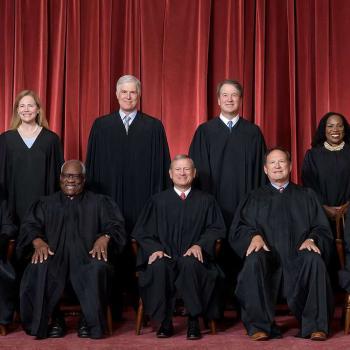My wife had a meeting in Lynchburg, Virginia, last week, so I tagged along. While she was busy, I explored. I went to Appomattox Court House to see where the Civil War ended. (Did you know that Appomattox Court House is not the name of the building where Lee and Grant met to sign the terms of surrender? Rather, Appomattox Court House is the name of the TOWN. Not to be confused with Appomattox, Virginia, which is nearby. Appomattox Court House was a little town that doesn’t exist any more, but the National Park Service has rebuilt part of it, restoring about half of the original buildings. You can go to the Court House, but it’s now the Visitors’ Center. The site of the surrender is the McLean House, which was owned by a prominent local merchant. Most of the population had fled the war, but Grant’s adjutant, looking for a place to hold the meeting, did not want to break into someone’s home without permission. Fortunately, Mr. McClean was still around and offered his home. The site today is very moving, portrayed as the place where the nation came together again. The film and exhibits put a lot of emphasis on how Grant and his army honored Lee and the defeated Confederates, refusing to vaunt over them and how both armies put on elaborate rituals of mutual respect.
Then I went to Red Hill, which was Patrick Henry’s home. He had a nice spread, on the top of a beautiful hill, but his house was tiny, just a simple square whitewashed dwelling, far different from the palatial Mt. Vernon of George Washington and the sophisticated Monticello of Thomas Jefferson. The obligatory movie had some fascinating clips of Henry’s speeches. He really could turn a phrase, and his eloquence is moving even today. Red Hill is run by a privately endowed foundation. It is quite nice and well-preserved, out in the middle of nowhere, and I was the only visitor at the time.
Later, on our way back home, we stopped at Natural Bridge, a huge stone archway some 200 feet tall. Perhaps Virginia’s oldest tourist attraction, George Washington as a young surveyor supposedly carved “G.W.” in the stone, initials that go way back and that are currently marked with a white rectangle. Then we drove home by way of the Blue Ridge Parkway, which turned into Skyline Drive at Shenandoah National Park, 105 miles of a 35 mph speedlimit, winding roads of sublime vistas.
Here is my topic for discussion: Conservatives generally prefer privatization to the government running things. But when it comes to National Parks and other National Monuments (such as Appomattox Court House and Shenandoah National Park), they tend to be better presented than commercially-run attractions. The Natural Bridge was magnificent, but you had to go through a souvenir shop to get to the path through the woods, and it was accompanied by a wax museum, an Indian village, a toy museum, a butterfly exhibit, and a hotel. Don’t get me wrong: the attraction is worth going to, with well-kept paths and helpful staff. But there sure was a lot of commercialism. The National Park service, in contrast, made everything accessible, but it was also kept relatively pristine, with a helpful ranger to tell you all about it. I suppose the Patrick Henry site shows another option: It is private but not commercial, with the foundation being devoted to preservation rather than turning a profit, so it doesn’t matter that much whether anyone comes to see it or not. Still, could we agree that certain historical and natural sites are best thought of as public goods, like roads and the military, and so the legitimate business of the federal government? Or do you think the principle of private ownership should extend even to what are now national parks and monuments, with the inevitable commercialization simply the price we have to pay?












